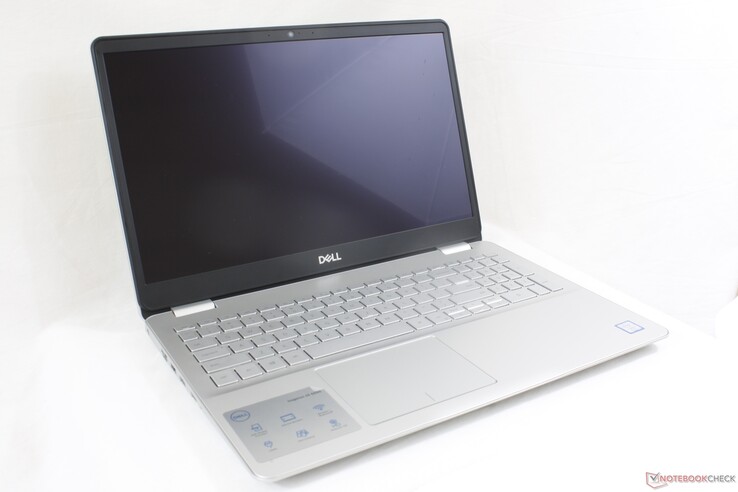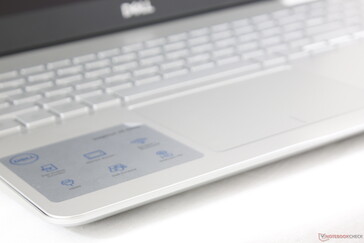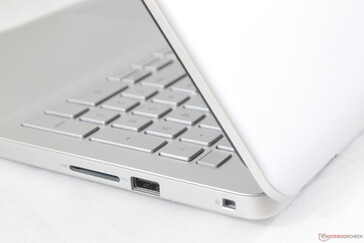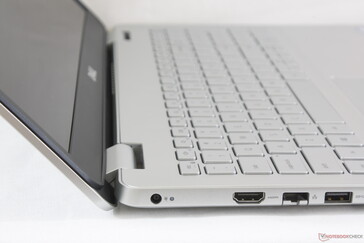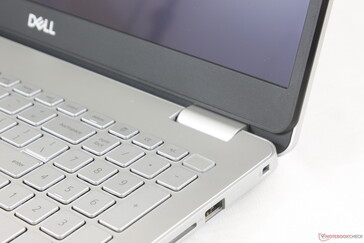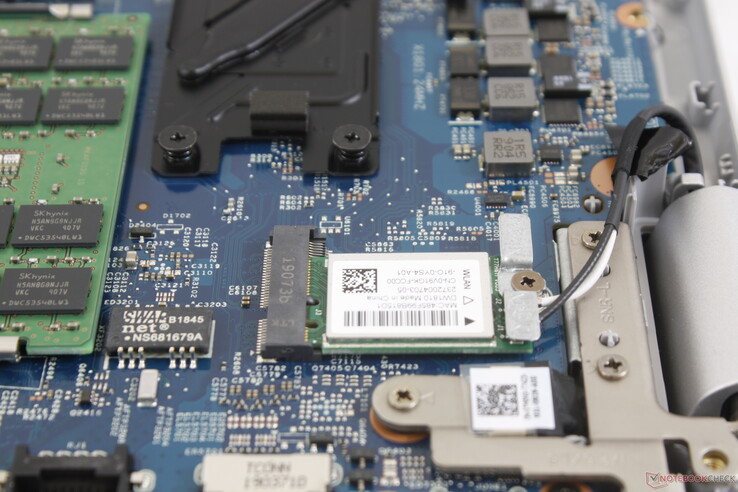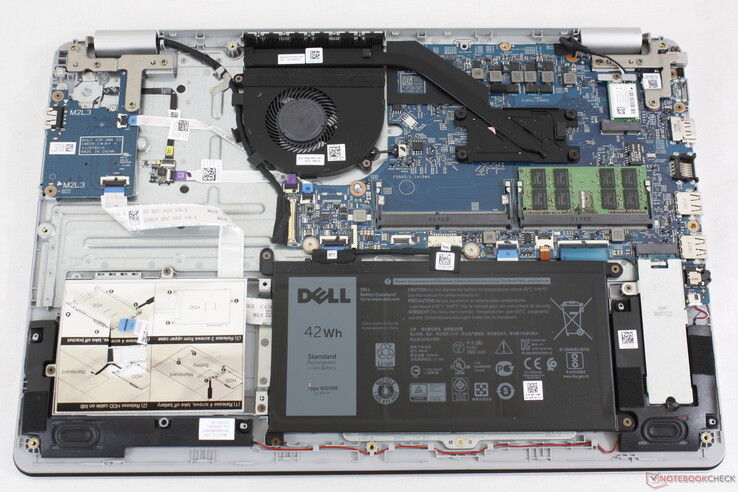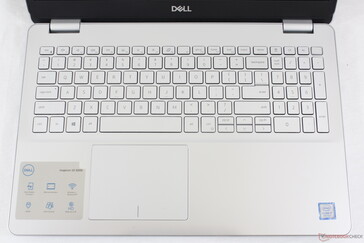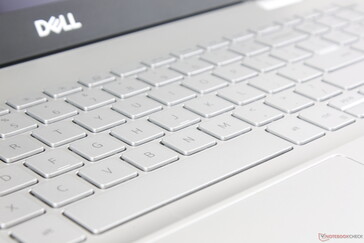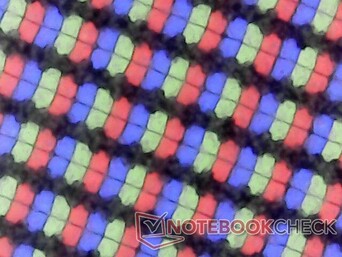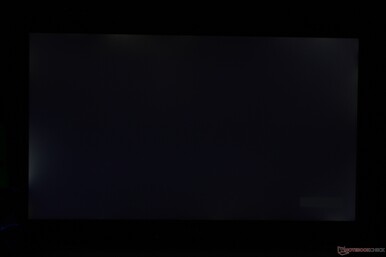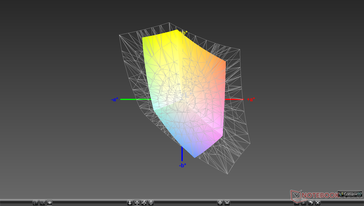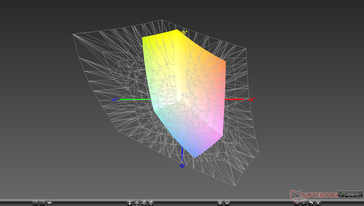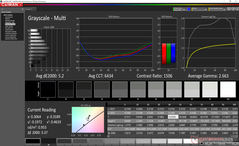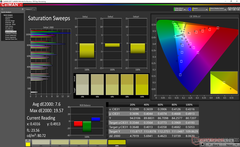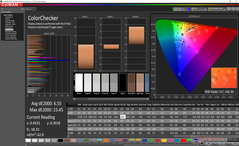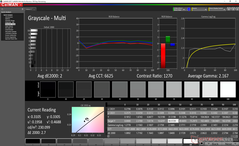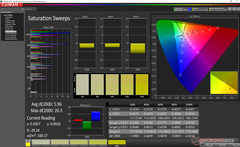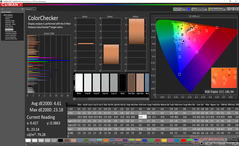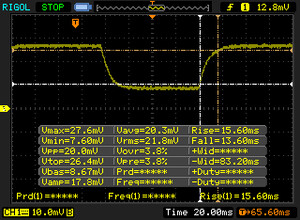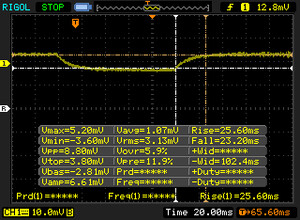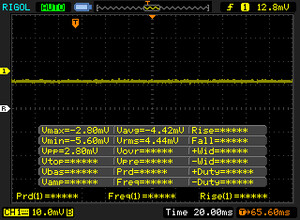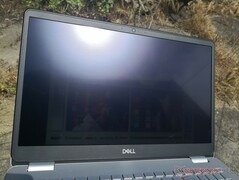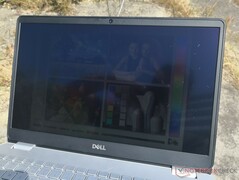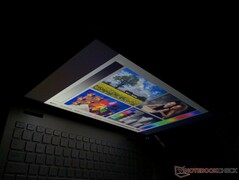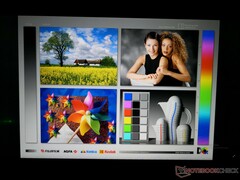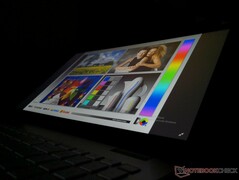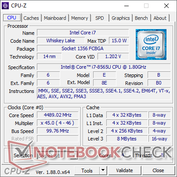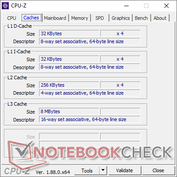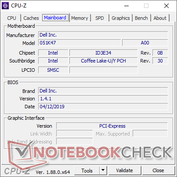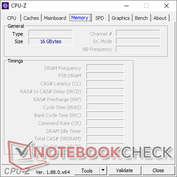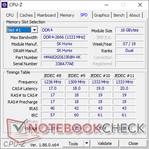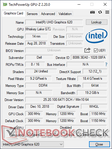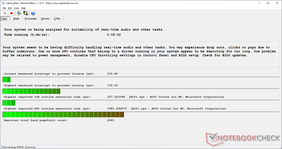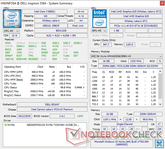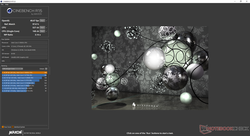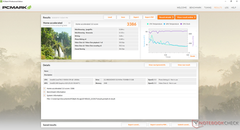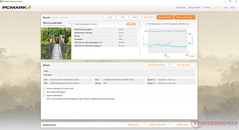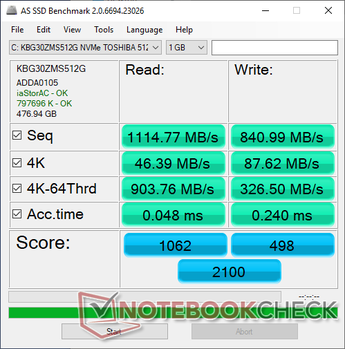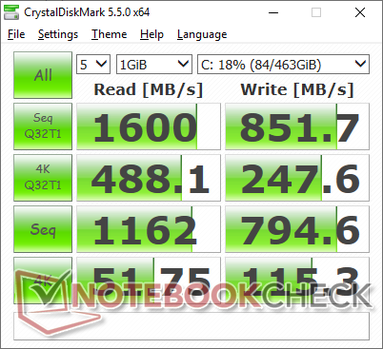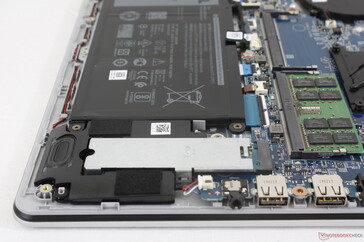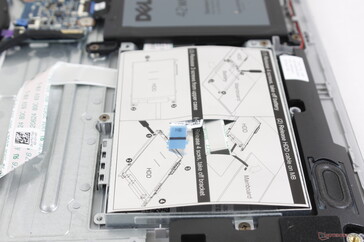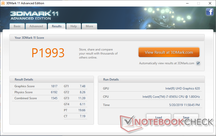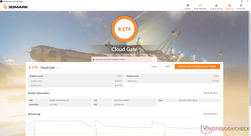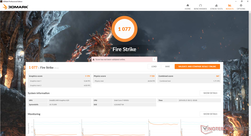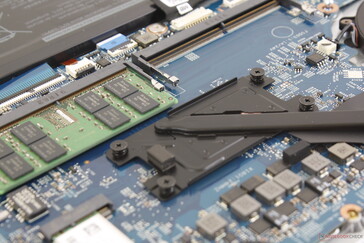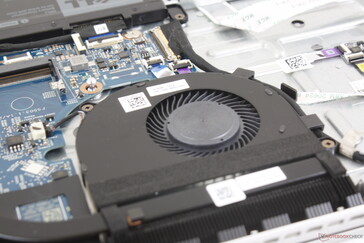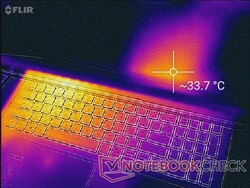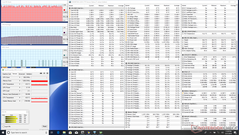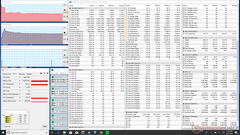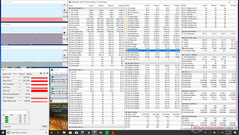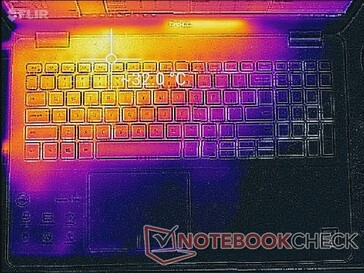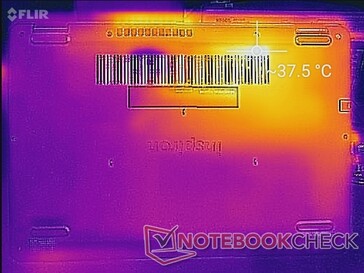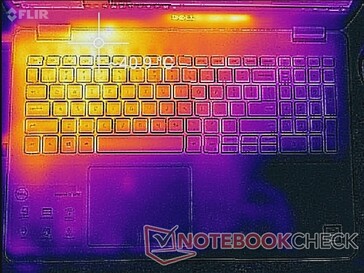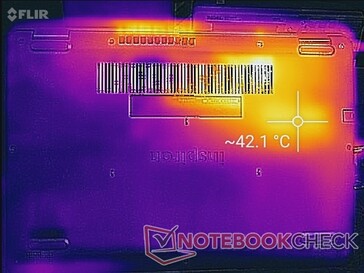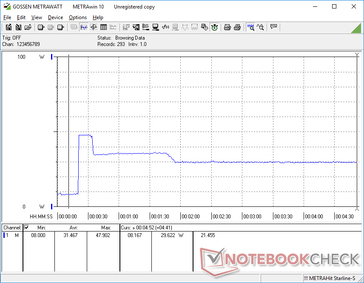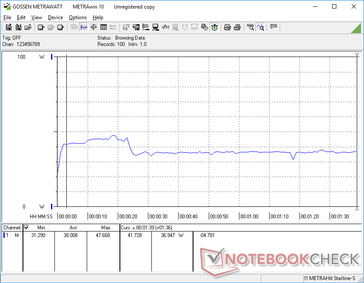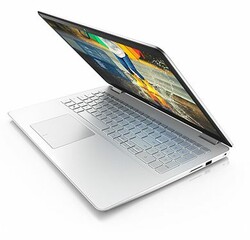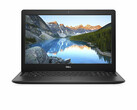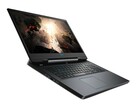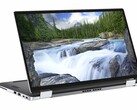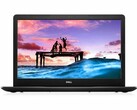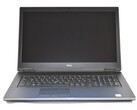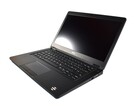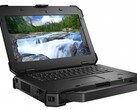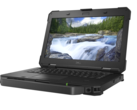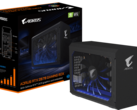Dell Inspiron 15 5000 5584 (i7-8565U) Laptop Review
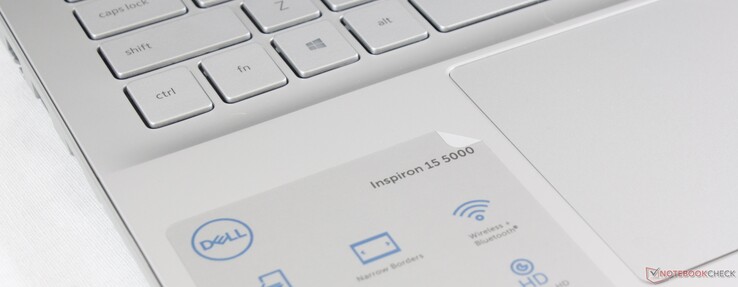
The Inspiron series is home to Dell's mid-range consumer laptops designed to be one step below the flagship XPS lineup. The Inspiron series itself is further divided into the budget Inspiron 3000, mid-range Inspiron 5000, and higher-end Inspiron 7000 families. The test unit we have today is the 15.6-inch Inspiron 15 5000 5584 for home users who want an affordable no-frills laptop for browsing, word processing, emailing, general multi-tasking, or the occasional schoolwork to succeed to last generation Inspiron 15 5570.
SKUs range from the Core i3-8145U with 4 GB of RAM and a 128 GB M.2 PCIe NVMe SSD for $440 up to the Core i7-8565U with 8 GB of RAM and a 256 GB SSD for $740 USD on Dell's official website. Our test unit is an even higher-end configuration with 16 GB of RAM and a 512 GB SSD for $900. The model competes directly with other budget 15.6-inch multimedia laptops including the Lenovo Yoga 730-15IKB, Acer Aspire 5 A515, HP Pavilion 15, and the Asus VivoBook 15.
More Dell Inspiron reviews:
Case
Unlike the higher-end aluminum-clad Inspiron 7000 series, our 5000 series model is largely plastic from top to bottom. In fact, the chassis is somewhat similar to the Inspiron 15 5770 and so many of our comments on that model apply here. Surfaces are slightly rough and uniform if not drab and featureless. Of course, users in the market for a $500 laptop shouldn't be expecting any flashy qualities in the first place. A noteworthy benefit of the matte gray plastic is its ability to hide grease better than the standard black color option. Users concerned about fingerprint accumulation may want to consider this light gray option.
Chassis rigidity is above average with only minimal twisting, depressions, and audible creaking around the base. The lid is comparatively more flexible especially down the center. We wouldn't recommend stacking too many books on top of the system as a result.
Construction quality is otherwise excellent on our test unit with no uneven gaps or crevices between materials. The small dual hinges are stronger than they appear with almost no teetering when typing or changing angles on a flat desk. Overall, we find the Dell to be stronger than the Asus VivoBook and on par with the 2019 Pavilion 15.
In terms of size and weight, the Inspiron has a smaller footprint but a thicker profile than the Pavilion 15 and Asus VivoBook 15. When compared to older budget laptops like the Inspiron 15 5575, however, the Inspiron 5584 is even smaller and lighter due largely to its narrow bezels. It's good to see narrow-bezel designs waterfall onto the budget category for everyone to benefit from the improved portability.
Connectivity
Available ports are similar to what you find on the HP Pavilion 15 or Acer Swift 5 with one major difference: USB Type-C is optional on the Inspiron 5584. It's ludicrous that Dell would consider the port an "option" instead of a standard in this day and age. Additionally, keep in mind that the RJ-45 port supports up to 100 Mbps only as it is not a Gigabit Ethernet port.
Port positioning is otherwise good with the left edge housing most of the ports.
SD Card Reader
Transfer rates from the integrated card reader continue to be very slow much like on other Inspiron laptops. Transferring 1 GB worth of pictures from our UHS-II test card to desktop takes about 44 seconds compared to 7 seconds on the XPS 15.
A fully inserted SD card still protrudes by about half its length.
| SD Card Reader | |
| average JPG Copy Test (av. of 3 runs) | |
| Dell XPS 15 9570 i7 UHD (Toshiba Exceria Pro SDXC 64 GB UHS-II) | |
| Acer Aspire 5 A515-52G-723L (Toshiba Exceria Pro SDXC 64 GB UHS-II) | |
| HP Pavilion 15-cs2019ng (Toshiba Exceria Pro SDXC 64 GB UHS-II) | |
| Dell Inspiron 15 5575-98MH4 (Toshiba Exceria Pro SDXC 64 GB UHS-II) | |
| Dell Inspiron 15 5000 5584 (Toshiba Exceria Pro SDXC 64 GB UHS-II) | |
| maximum AS SSD Seq Read Test (1GB) | |
| Dell XPS 15 9570 i7 UHD (Toshiba Exceria Pro SDXC 64 GB UHS-II) | |
| Acer Aspire 5 A515-52G-723L (Toshiba Exceria Pro SDXC 64 GB UHS-II) | |
| Dell Inspiron 15 5575-98MH4 (Toshiba Exceria Pro SDXC 64 GB UHS-II) | |
| HP Pavilion 15-cs2019ng (Toshiba Exceria Pro SDXC 64 GB UHS-II) | |
| Dell Inspiron 15 5000 5584 (Toshiba Exceria Pro SDXC 64 GB UHS-II) | |
Communication
Dell ships the same 1x1 QCA9377 WLAN module as found on the older Inspiron 5575. Performance is therefore similar with theoretical transfer rates about half that of the faster 2x2 Killer 1535. Speeds are still reliable and more than sufficient for 1080p streaming and browsing.
Maintenance
The bottom panel is moderately difficult to remove as the edges and corners are tightly latched. Once removed, users will have access to two SODIMM slots and two storage bays.The large unused space between the HDD and system fan feels wasted and under-utilized.
Accessories and Warranty
There are no included extras in the box other than the AC adapter and Quick Start guide. Warranty options are plentiful as is usual for Dell PCs since the manufacturer specializes in consumer and business services.
Input Devices
Keyboard
Key feedback is slightly softer with quieter clatter than the keys on an XPS 15. The Space and Enter keys are the exception as these are comparatively louder and firmer when pressed. We still find the keyboard to be satisfactory for word processing even though we would have preferred firmer feedback overall. Users who do a lot of Excel or spreadsheet work will be disappointed by the small and cramped Arrow keys and NumPad.
A disadvantage to the light gray color option is that contrast between the key cap and printed letters is poor. While most black laptops have white printing, the gray-on-gray keys and letters hrtr can be difficult to see even with the backlight activated depending on the ambient lighting.
Touchpad
The trackpad (10.5 x 8 cm) is just slightly smaller than the trackpad on the XPS 15 (10.5 x 8.5 cm). Cursor movement is smooth and without any jumping when gliding across the slightly roughened texture. Gliding very slowly results in a small amount of sticking which we don't find to be bothersome in practice.
Feedback from the integrated mouse keys is adequate if not a bit on the shallow and spongy side. For example, it's possible to visibly depress the trackpad surface without registering a click. The auditory click is otherwise reasonably loud.
Display
The 1080p IPS display comes standard on all SKUs with touch and non-touch options. We're glad to see Dell drop the horrid 768p TN panels that plagued many older budget laptops including Dell's own Inspiron 5575. The AU Optronics AUO22ED panel on our Inspiron is the same one that HP uses for its older Envy 15 x360.
Brightness, response times, and colors are mediocre but otherwise standard for the price category. Contrast is perhaps the best aspect of the display at about 1000:1, but the shallow colors of the panel still give an overall budget first impression. Colors are noticeably less vibrant during video playback.
The matte panel does not suffer from any major graininess issues and it is just slightly less crisp than a typical glossy panel. We can observe no pulse-width modulation either unlike on the Pavilion 15, Aspire 5, or Lenovo Yoga 730. Users sensitive to onscreen flickering won't have to worry about eyestrain on the Inspiron 5584.
There is light-moderate uneven backlight bleeding along the edges of our screen as shown by the picture below. it is generally unnoticeable when browsing but it becomes apparent when watching videos with black borders.
| |||||||||||||||||||||||||
Brightness Distribution: 92 %
Center on Battery: 227 cd/m²
Contrast: 1081:1 (Black: 0.21 cd/m²)
ΔE ColorChecker Calman: 6.55 | ∀{0.5-29.43 Ø4.78}
calibrated: 4.61
ΔE Greyscale Calman: 5.2 | ∀{0.09-98 Ø5}
58.2% sRGB (Argyll 1.6.3 3D)
37% AdobeRGB 1998 (Argyll 1.6.3 3D)
40.48% AdobeRGB 1998 (Argyll 3D)
58.8% sRGB (Argyll 3D)
39.17% Display P3 (Argyll 3D)
Gamma: 2.66
CCT: 6434 K
| Dell Inspiron 15 5000 5584 AU Optronics AUO22ED, B156HAK, IPS, 15.6", 1920x1080 | Dell XPS 15 9570 i7 UHD LQ156D1, IPS, 15.6", 3840x2160 | HP Pavilion 15-cs2019ng BOE080D, IPS, 15.6", 1920x1080 | Acer Aspire 5 A515-52G-723L BOE NV156FHM-N48, IPS, 15.6", 1920x1080 | Lenovo Yoga 730-15IKB BOE HF NV156QUM-N51, IPS, 15.6", 3840x2160 | Dell Inspiron 15 5575-98MH4 Innolux JMC9X 156BGA, TN LED, 15.6", 1366x768 | |
|---|---|---|---|---|---|---|
| Display | 89% | 60% | 1% | 64% | 2% | |
| Display P3 Coverage (%) | 39.17 | 79.1 102% | 67.2 72% | 40.02 2% | 68.7 75% | 40.02 2% |
| sRGB Coverage (%) | 58.8 | 98.8 68% | 88.1 50% | 58.5 -1% | 90 53% | 59.8 2% |
| AdobeRGB 1998 Coverage (%) | 40.48 | 79.2 96% | 64.4 59% | 41.34 2% | 65.8 63% | 41.37 2% |
| Response Times | -3% | 7% | -3% | 22% | 8% | |
| Response Time Grey 50% / Grey 80% * (ms) | 48.8 ? | 46.4 ? 5% | 43 ? 12% | 45 ? 8% | 34 ? 30% | 50 ? -2% |
| Response Time Black / White * (ms) | 29.2 ? | 32 ? -10% | 29 ? 1% | 33 ? -13% | 25 ? 14% | 24 ? 18% |
| PWM Frequency (Hz) | 980 ? | 208 ? | 250 ? | 961 ? | 250 ? | |
| Screen | 44% | 26% | 13% | 20% | -34% | |
| Brightness middle (cd/m²) | 227 | 494 118% | 320 41% | 278 22% | 309 36% | 197 -13% |
| Brightness (cd/m²) | 230 | 457 99% | 293 27% | 271 18% | 299 30% | 195 -15% |
| Brightness Distribution (%) | 92 | 88 -4% | 86 -7% | 89 -3% | 84 -9% | 78 -15% |
| Black Level * (cd/m²) | 0.21 | 0.34 -62% | 0.26 -24% | 0.26 -24% | 0.29 -38% | 0.43 -105% |
| Contrast (:1) | 1081 | 1453 34% | 1231 14% | 1069 -1% | 1066 -1% | 458 -58% |
| Colorchecker dE 2000 * | 6.55 | 5.2 21% | 4.5 31% | 4.73 28% | 3.9 40% | 10.35 -58% |
| Colorchecker dE 2000 max. * | 23.45 | 17.5 25% | 8.81 62% | 8.38 64% | 7.5 68% | 16.02 32% |
| Colorchecker dE 2000 calibrated * | 4.61 | 5.17 -12% | ||||
| Greyscale dE 2000 * | 5.2 | 2.7 48% | 4.71 9% | 2.59 50% | 4.58 12% | 11.25 -116% |
| Gamma | 2.66 83% | 2.1 105% | 2.45 90% | 2.38 92% | 2.43 91% | 2.08 106% |
| CCT | 6434 101% | 7038 92% | 7085 92% | 6160 106% | 7344 89% | 11592 56% |
| Color Space (Percent of AdobeRGB 1998) (%) | 37 | 71.2 92% | 58 57% | 36 -3% | 39 5% | 38 3% |
| Color Space (Percent of sRGB) (%) | 58.2 | 98.8 70% | 88 51% | 58 0% | 90 55% | 60 3% |
| Total Average (Program / Settings) | 43% /
47% | 31% /
30% | 4% /
9% | 35% /
29% | -8% /
-21% |
* ... smaller is better
Color space is narrow at just 58 percent of sRGB. In comparison, the competing HP Pavilion is able to reproduce almost 90 percent of sRGB for deeper and more accurate colors. The small color space on our budget Inspiron would have been acceptable a few years ago, but we think Dell can do better without bumping up the price.
Further measurements with an X-Rite colorimeter reveal inaccurate grayscale and colors. Our calibration attempts improve the former by a significant margin from an average DeltaE of 5.2 to 2, but colors remain inaccurate due to the narrow color space as mentioned above. Blue and Magenta colors in particular are more inaccurate than the other primary and secondary colors.
Display Response Times
| ↔ Response Time Black to White | ||
|---|---|---|
| 29.2 ms ... rise ↗ and fall ↘ combined | ↗ 15.6 ms rise | |
| ↘ 13.6 ms fall | ||
| The screen shows relatively slow response rates in our tests and may be too slow for gamers. In comparison, all tested devices range from 0.1 (minimum) to 240 (maximum) ms. » 77 % of all devices are better. This means that the measured response time is worse than the average of all tested devices (20.2 ms). | ||
| ↔ Response Time 50% Grey to 80% Grey | ||
| 48.8 ms ... rise ↗ and fall ↘ combined | ↗ 25.6 ms rise | |
| ↘ 23.2 ms fall | ||
| The screen shows slow response rates in our tests and will be unsatisfactory for gamers. In comparison, all tested devices range from 0.165 (minimum) to 636 (maximum) ms. » 84 % of all devices are better. This means that the measured response time is worse than the average of all tested devices (31.6 ms). | ||
Screen Flickering / PWM (Pulse-Width Modulation)
| Screen flickering / PWM not detected | |||
In comparison: 53 % of all tested devices do not use PWM to dim the display. If PWM was detected, an average of 8111 (minimum: 5 - maximum: 343500) Hz was measured. | |||
Outdoor visibility is poor because of the dim backlight. The laptop is clearly not designed to be used outdoors on a frequent basis despite the matte panel and wide IPS viewing angles. While colors or contrast don't change significantly if viewing from extreme angles, apparent brightness will drop which hinders outdoor visibility even further.
Performance
All SKUs are equipped with 15 W ULV CPUs from Intel's Whiskey Lake-U family of Core ix processors to succeed the last generation Kaby Lake-R family. These are the same processor options as found on higher-end Ultrabooks like the HP Spectre or Dell XPS 13 but at much cheaper prices. Ryzen 5 2500U or Ryzen 7 2700U SKUs are also available to supplement the Intel SKUs while also providing faster graphics performance.
RAM is expandable up to 32 GB across two SODIMM slots. We recommend configuring with dual-channel memory if possible. LatencyMon shows poor real-time audio suitability even when the wireless is disabled.
Processor
CPU performance is slightly slower than expected due to the processor's tendency to throttle in the Inspiron. When running CineBench R15 Multi-Thread in a loop, the initial score of 604 points drops to 509 points by the third loop to represent a 16 percent performance deficit. The competing Ryzen 7 2700U in the Latitude 14 is able to outperform our Intel processor by 15 to 27 percent due to the steeper throttling on our Inspiron.
In practice, the target multimedia user will not notice the CPU performance hit when under high loads. The quad-core i7-8565U is still significantly faster than the lower-end Core i3-8145U, dated dual-core i7-7500U, and any 4.5 W Intel Atom or Core Y solution as found on most netbooks.
See our dedicated page on the Core i7-8565U for more technical information and benchmark comparisons.
| Cinebench R11.5 | |
| CPU Single 64Bit | |
| Average Intel Core i7-8565U (0.65 - 2.16, n=11) | |
| Acer Swift 3 SF314-55-31N8 | |
| CPU Multi 64Bit | |
| Average Intel Core i7-8565U (4.09 - 7.4, n=11) | |
| Acer Swift 3 SF314-55-31N8 | |
| Cinebench R10 | |
| Rendering Multiple CPUs 32Bit | |
| Dell G5 15 5590 | |
| Average Intel Core i7-8565U (13806 - 23118, n=16) | |
| Acer Swift 3 SF314-55-31N8 | |
| Rendering Single 32Bit | |
| Average Intel Core i7-8565U (2682 - 8906, n=16) | |
| Dell G5 15 5590 | |
| Acer Swift 3 SF314-55-31N8 | |
| wPrime 2.10 - 1024m | |
| Acer Swift 3 SF314-55-31N8 | |
| Average Intel Core i7-8565U (263 - 420, n=7) | |
* ... smaller is better
System Performance
PCMark benchmarks rank our Dell rather highly especially in the Productivity and Essentials tests. In real-world terms, the Inspiron 5584 is excellent for day-to-day browsing and web streaming not unlike a pricier Ultrabook. Its Digital Content Creation prowess still under-performs when compared to laptops with dedicated GPUs.
We experienced no hardware or software issues during our time with the unit.
| PCMark 8 Home Score Accelerated v2 | 3386 points | |
| PCMark 8 Work Score Accelerated v2 | 4540 points | |
| PCMark 10 Score | 4060 points | |
Help | ||
Storage Devices
Two internal storage bays are available via an M.2 2280 slot and a 2.5-inch SATA III bay. The 512 GB Toshiba BG3 KBG30ZMS512G NVMe SSD in our test unit returns average sequential read and write rates of about 1100 MB/s and 840 MB/s, respectively, to represent a budget NVMe SSD. While slower than costlier SSDs like the Samsung PM981, results are still significantly better than any HDD or SATA III-based SSD found on most budget laptops.
See our table of HDDs and SSDs for more benchmark comparisons.
| Dell Inspiron 15 5000 5584 Toshiba BG3 KBG30ZMS512G | HP Pavilion 15-cs2019ng Toshiba KBG30ZMV256G | Acer Aspire 5 A515-52G-723L WDC PC SN520 SDAPNUW-512G | Lenovo Yoga 730-15IKB SK Hynix PC401 512GB M.2 (HFS512GD9TNG) | Dell XPS 15 9570 Core i9 UHD Samsung SSD PM981 MZVLB1T0HALR | |
|---|---|---|---|---|---|
| AS SSD | -69% | 47% | 16% | 92% | |
| Seq Read (MB/s) | 1115 | 1153 3% | 1557 40% | 2158 94% | 1320 18% |
| Seq Write (MB/s) | 841 | 736 -12% | 1237 47% | 680 -19% | 1500 78% |
| 4K Read (MB/s) | 46.39 | 46.51 0% | 42.56 -8% | 44.74 -4% | 30.73 -34% |
| 4K Write (MB/s) | 87.6 | 114.1 30% | 127.2 45% | 123 40% | 94.4 8% |
| 4K-64 Read (MB/s) | 904 | 618 -32% | 1034 14% | 623 -31% | 1453 61% |
| 4K-64 Write (MB/s) | 326.5 | 461.4 41% | 1186 263% | 486 49% | 1815 456% |
| Access Time Read * (ms) | 0.048 | 0.421 -777% | 0.077 -60% | 0.044 8% | 0.061 -27% |
| Access Time Write * (ms) | 0.24 | 0.233 3% | 0.028 88% | 0.051 79% | 0.044 82% |
| Score Read (Points) | 1062 | 780 -27% | 1233 16% | 884 -17% | 1616 52% |
| Score Write (Points) | 498 | 649 30% | 1437 189% | 677 36% | 2059 313% |
| Score Total (Points) | 2100 | 1822 -13% | 3291 57% | 1951 -7% | 4507 115% |
| Copy ISO MB/s (MB/s) | 1090 | 1313 20% | 1641 51% | 2577 136% | |
| Copy Program MB/s (MB/s) | 618 | 334.6 -46% | 390 -37% | 515 -17% | |
| Copy Game MB/s (MB/s) | 750 | 684 -9% | 574 -23% | 1120 49% |
* ... smaller is better
GPU Performance
The integrated UHD Graphics 620 is unfit for gaming beyond undemanding browser-based games. For 1080p or 4K video streaming, however, it does the job just fine. Users who want faster graphics performance for games like Fortnite or Rocket League should consider the Inspiron 17 with GeForce MX150 graphics or a Ryzen 7 SKU with the Vega 10.
See our dedicated page on the UHD Graphics 620 for more technical information and benchmark comparisons.
| 3DMark 11 Performance | 1993 points | |
| 3DMark Cloud Gate Standard Score | 8174 points | |
| 3DMark Fire Strike Score | 1077 points | |
Help | ||
Emissions
System Noise
The cooling solution consists of just one fan and a short heat pipe. The fan will idle during very low loads like 1080p streaming or word processing for a silent experience. At worst, users can expect a fan noise of just 28.9 dB(A) when web browsing for long periods. There are no constant fan pulsing issues to speak of.
Extreme load represented by Prime95 will induce a temporary fan noise of 36 dB(A). This lasts for only a few seconds before fan noise drops to about 34 dB(A). The Inspiron runs quieter than the smaller XPS 13 equipped with the same Core i7 CPU.
We can notice very slight coil whining on our test unit when placing an ear near the keyboard in a silent room with no ambient noise. It's essentially unnoticeable during everyday use.
| Dell Inspiron 15 5000 5584 UHD Graphics 620, i7-8565U, Toshiba BG3 KBG30ZMS512G | HP Pavilion 15-cs2019ng GeForce MX250, i5-8265U, Toshiba KBG30ZMV256G | Acer Aspire 5 A515-52G-723L GeForce MX250, i7-8565U, WDC PC SN520 SDAPNUW-512G | Dell XPS 15 9570 Core i9 UHD GeForce GTX 1050 Ti Max-Q, i9-8950HK, Samsung SSD PM981 MZVLB1T0HALR | Dell Inspiron 15 5575-98MH4 Vega 3, R3 2200U, Seagate Mobile HDD 1TB ST1000LM035 | LG Gram 17Z990-R.AAS7U1 UHD Graphics 620, i7-8565U, Samsung SSD PM871b MZNLN256HAJQ | |
|---|---|---|---|---|---|---|
| Noise | -18% | -13% | -10% | -11% | -4% | |
| off / environment * (dB) | 28.4 | 30.5 -7% | 29.9 -5% | 28.2 1% | 30.4 -7% | 28.1 1% |
| Idle Minimum * (dB) | 28.4 | 31.5 -11% | 29.9 -5% | 28.5 -0% | 31.4 -11% | 28.1 1% |
| Idle Average * (dB) | 28.4 | 31.5 -11% | 29.9 -5% | 28.6 -1% | 31.4 -11% | 28.1 1% |
| Idle Maximum * (dB) | 28.4 | 31.5 -11% | 29.9 -5% | 28.8 -1% | 31.6 -11% | 28.1 1% |
| Load Average * (dB) | 28.9 | 42.5 -47% | 41.7 -44% | 36.2 -25% | 31.9 -10% | 35 -21% |
| Load Maximum * (dB) | 36 | 42.5 -18% | 41.7 -16% | 47.6 -32% | 40.9 -14% | 37.4 -4% |
| Witcher 3 ultra * (dB) | 47.6 |
* ... smaller is better
Noise level
| Idle |
| 28.4 / 28.4 / 28.4 dB(A) |
| Load |
| 28.9 / 36 dB(A) |
 | ||
30 dB silent 40 dB(A) audible 50 dB(A) loud |
||
min: | ||
Temperature
Surface temperatures will always be warmer towards the left half of the laptop than the right half due to the positioning of the motherboard and processor. The temperature difference can be as high as 7 C between the hot and cool spots when just idling on desktop. Even so, we don't find the keyboard or palm rests uncomfortably warm when typing.
When under higher loads, the hot spots can become as warm as 41 C on both the top and bottom sides of the laptop compared to 50 C on the thinner Acer Swift 5 equipped with the same CPU and integrated GPU. The palm rests remain cool relative to the WASD keys for comfortable palms and fingers.
Stress Test
We run synthetic benchmarks to test for any potential throttling or stability issues. When running Prime95, CPU clock rates can be as high as 4.1 GHz for the first few seconds until hitting a core temperature of 92 C. Thereafter, clock rate drops to a steady 2.3 GHz in order to maintain a cooler core temperature of 61 C. The system is able to maintain a Turbo Boost of +400 MHz above the base 1.9 GHz clock rate of the Core i7-8565U. When running both Prime95 and FurMark simultaneously, the processor will throttle down to 1.1 GHz. Core temperature appears to plateau at about 60 C when under very high stress.
Running on battery power will not impact performance. A 3DMark 11 run on batteries returns Physics and Graphics 6087 and 1772 points, respectively, compared to 6192 and 1817 points when on mains.
| CPU Clock (GHz) | GPU Clock (MHz) | Average CPU Temperature (°C) | |
| System Idle | -- | -- | 43 |
| Prime95 Stress | 2.3 | -- | 61 |
| Prime95 + FurMark Stress | 1.1 | 848 | 60 |
(±) The maximum temperature on the upper side is 40.8 °C / 105 F, compared to the average of 36.9 °C / 98 F, ranging from 21.1 to 71 °C for the class Multimedia.
(-) The bottom heats up to a maximum of 47.4 °C / 117 F, compared to the average of 39.2 °C / 103 F
(+) In idle usage, the average temperature for the upper side is 26.4 °C / 80 F, compared to the device average of 31.3 °C / 88 F.
(+) The palmrests and touchpad are cooler than skin temperature with a maximum of 25.4 °C / 77.7 F and are therefore cool to the touch.
(+) The average temperature of the palmrest area of similar devices was 28.7 °C / 83.7 F (+3.3 °C / 6 F).
Speakers
Audio quality is good for a budget laptop. Volume is loud and with a relatively balanced range while the roll off at about 250 Hz is common on most laptops.
A downside to the speakers is their tendency to vibrate the palm rests even when the volume is set to 50 percent. This can potentially be annoying during music or video playback.
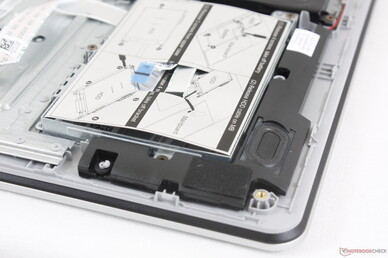
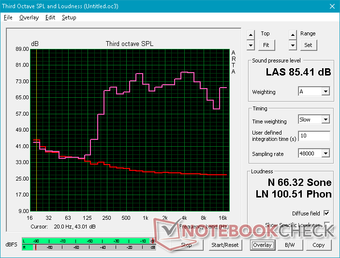
Dell Inspiron 15 5000 5584 audio analysis
(+) | speakers can play relatively loud (85.4 dB)
Bass 100 - 315 Hz
(-) | nearly no bass - on average 18.1% lower than median
(±) | linearity of bass is average (14.1% delta to prev. frequency)
Mids 400 - 2000 Hz
(+) | balanced mids - only 2.6% away from median
(±) | linearity of mids is average (7.6% delta to prev. frequency)
Highs 2 - 16 kHz
(+) | balanced highs - only 4.3% away from median
(+) | highs are linear (6.8% delta to prev. frequency)
Overall 100 - 16.000 Hz
(±) | linearity of overall sound is average (18.2% difference to median)
Compared to same class
» 52% of all tested devices in this class were better, 8% similar, 40% worse
» The best had a delta of 5%, average was 17%, worst was 45%
Compared to all devices tested
» 38% of all tested devices were better, 8% similar, 54% worse
» The best had a delta of 4%, average was 24%, worst was 134%
Apple MacBook 12 (Early 2016) 1.1 GHz audio analysis
(+) | speakers can play relatively loud (83.6 dB)
Bass 100 - 315 Hz
(±) | reduced bass - on average 11.3% lower than median
(±) | linearity of bass is average (14.2% delta to prev. frequency)
Mids 400 - 2000 Hz
(+) | balanced mids - only 2.4% away from median
(+) | mids are linear (5.5% delta to prev. frequency)
Highs 2 - 16 kHz
(+) | balanced highs - only 2% away from median
(+) | highs are linear (4.5% delta to prev. frequency)
Overall 100 - 16.000 Hz
(+) | overall sound is linear (10.2% difference to median)
Compared to same class
» 7% of all tested devices in this class were better, 2% similar, 91% worse
» The best had a delta of 5%, average was 18%, worst was 53%
Compared to all devices tested
» 4% of all tested devices were better, 1% similar, 94% worse
» The best had a delta of 4%, average was 24%, worst was 134%
Energy Management
Power Consumption
Idling will draw between 3 W and 9 W to be just as power efficient as other Whiskey Lake-U laptops including the Pavilion 15 and Aspire 5. Gaming load will only demand about 38 W since there is no discrete GPU.
We're able to record a power draw of 47.9 W from the small (~9.5 x 4.0 x 2.5 cm) 45 W AC adapter when running Prime95 to stress the processor to its limits. Power consumption eventually drops and stabilizes at 29.6 W after just a few seconds due to performance throttling. This behavior matches our observations during the CineBench R15 loop test and stress test above.
| Off / Standby | |
| Idle | |
| Load |
|
Key:
min: | |
| Dell Inspiron 15 5000 5584 i7-8565U, UHD Graphics 620, Toshiba BG3 KBG30ZMS512G, IPS, 1920x1080, 15.6" | HP Pavilion 15-cs2019ng i5-8265U, GeForce MX250, Toshiba KBG30ZMV256G, IPS, 1920x1080, 15.6" | Acer Aspire 5 A515-52G-723L i7-8565U, GeForce MX250, WDC PC SN520 SDAPNUW-512G, IPS, 1920x1080, 15.6" | Lenovo Yoga 730-15IKB i5-8550U, GeForce GTX 1050 Mobile, SK Hynix PC401 512GB M.2 (HFS512GD9TNG), IPS, 3840x2160, 15.6" | Dell XPS 15 9570 Core i9 UHD i9-8950HK, GeForce GTX 1050 Ti Max-Q, Samsung SSD PM981 MZVLB1T0HALR, IPS, 3840x2160, 15.6" | Dell XPS 15 9570 i7 UHD i7-8750H, GeForce GTX 1050 Ti Max-Q, Toshiba XG5 KXG50ZNV512G, IPS, 3840x2160, 15.6" | |
|---|---|---|---|---|---|---|
| Power Consumption | -20% | -22% | -42% | -119% | -141% | |
| Idle Minimum * (Watt) | 3.6 | 4.9 -36% | 4.4 -22% | 4.8 -33% | 7.1 -97% | 9.48 -163% |
| Idle Average * (Watt) | 7.4 | 7.9 -7% | 6.9 7% | 10.1 -36% | 13.6 -84% | 16.1 -118% |
| Idle Maximum * (Watt) | 8.3 | 10.1 -22% | 9.9 -19% | 10.7 -29% | 14.1 -70% | 16.9 -104% |
| Load Average * (Watt) | 38 | 60 -58% | 55 -45% | 44 -16% | 103.9 -173% | 90.8 -139% |
| Load Maximum * (Watt) | 47.9 | 38 21% | 63.4 -32% | 94.7 -98% | 130.9 -173% | 134.4 -181% |
| Witcher 3 ultra * (Watt) | 103 |
* ... smaller is better
Battery Life
Runtimes are poor from the small 42 Wh battery. Expect just 3.5 hours of real-world WLAN use compared to twice that on the Acer Swift 5 with the same CPU and GPU. Pricier laptops tend to have higher capacity batteries for longer runtimes.
Sitting completely idle on desktop at the minimum brightness level lasts for about 15 hours. Thus, expect longer runtimes during very light loads like emailing or word processing as opposed to constant web browsing.
Charging from empty to full capacity takes about 1.5 to 2 hours.
| Dell Inspiron 15 5000 5584 i7-8565U, UHD Graphics 620, 42 Wh | HP Pavilion 15-cs2019ng i5-8265U, GeForce MX250, 41 Wh | Acer Aspire 5 A515-52G-723L i7-8565U, GeForce MX250, 48 Wh | Lenovo Yoga 730-15IKB i5-8550U, GeForce GTX 1050 Mobile, 51.5 Wh | Dell XPS 15 9570 Core i9 UHD i9-8950HK, GeForce GTX 1050 Ti Max-Q, 97 Wh | Acer Swift 5 SF515-51T-76B6 i7-8565U, UHD Graphics 620, 53.9 Wh | |
|---|---|---|---|---|---|---|
| Battery runtime | -2% | 45% | 5% | 40% | 66% | |
| Reader / Idle (h) | 15.3 | 8 -48% | 12.9 -16% | 11.6 -24% | 15 -2% | 16.2 6% |
| WiFi v1.3 (h) | 3.5 | 5 43% | 6.9 97% | 6.2 77% | 8.6 146% | 7.2 106% |
| Load (h) | 1.3 | 1.3 0% | 2 54% | 0.8 -38% | 1 -23% | 2.4 85% |
Pros
Cons
Verdict
We commend the Inspiron 15 5584 for bumping up the standard for what all budget laptops should have. The primary SSD, 1080p IPS display, and narrow bezel design should be the bare minimum for any multimedia laptop released in 2019 and so it's great to see Dell skip over default HDDs and 768p panels.
There are some disadvantages to keep in mind. Aside from the optional USB Type-C port, the system is a poor companion for travelers due to its dim display, spongy clickpad, short-to-average battery life, and thicker profile than both the Pavilion 15 and Aspire 5. This is more of an indoor laptop with the occasional traveling between destinations. Meanwhile, casual gamers will have to look elsewhere or consider the AMD Ryzen SKUs since the system offers no discrete GPU options unlike on the aforementioned HP or Acer alternatives. We're hopeful that future revisions will make USB Type-C standard for both data and charging, improve the feedback on the clickpad, and increase the size of the NumPad and Arrow keys without impacting the attractive price of the series.
An affordable solution for at-home multimedia playback or word processing. We recommend going for the Core i5-8265U SKU instead of the i7-8565U SKU as the performance advantage of the Core i7 will be minimal at best for this chassis. The money saved can be spent on additional RAM or storage instead.
Dell Inspiron 15 5000 5584
- 05/25/2019 v6 (old)
Allen Ngo




